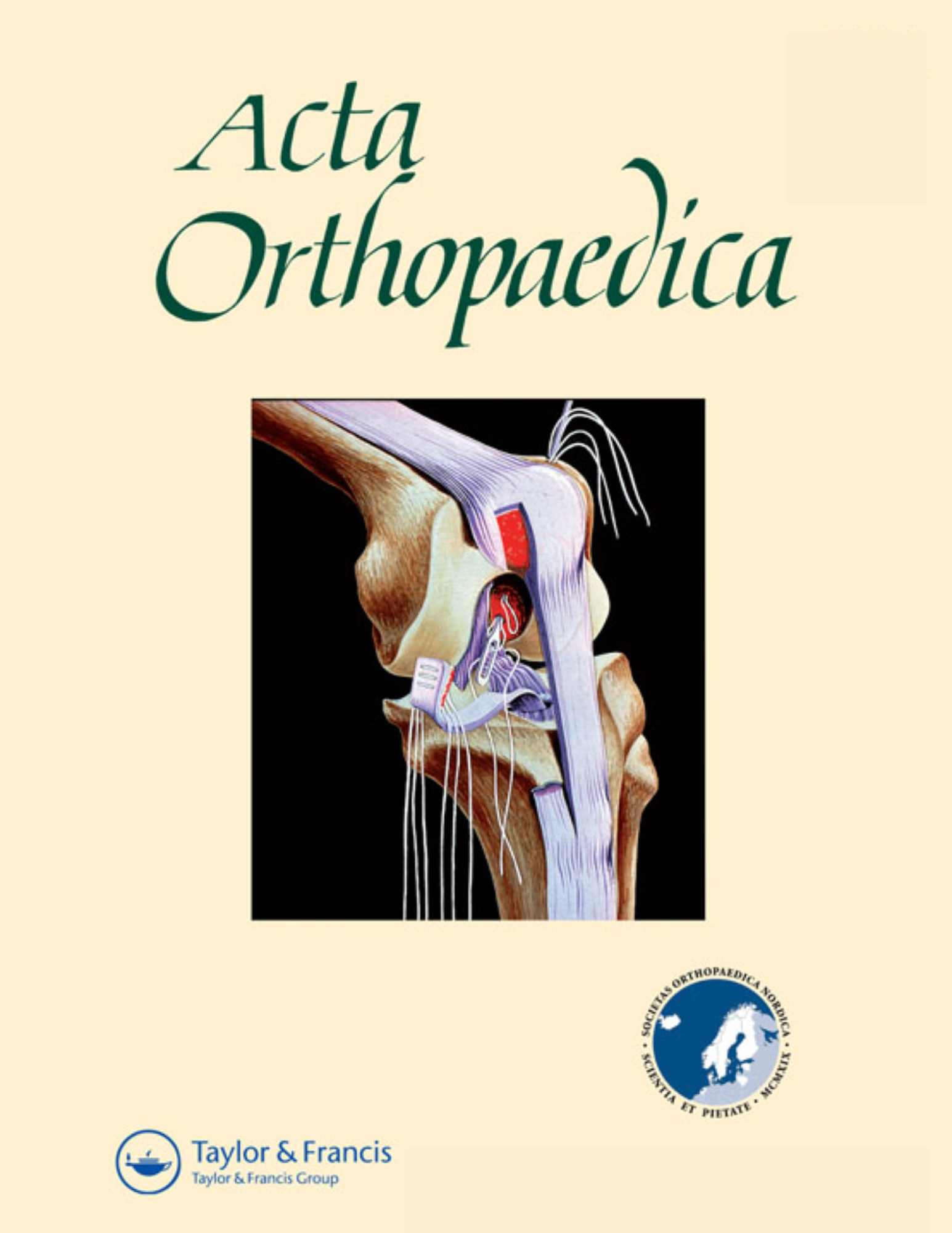
Migration similar between cemented and uncemented cups in trapeziometacarpal arthroplasty

Migration similar between cemented and uncemented cups in trapeziometacarpal arthroplasty
Equally good fixation of cemented and uncemented cups in total trapeziometacarpal joint prostheses
Acta Orthop. 2013 Feb;84(1):98-105. doi: 10.3109/17453674.2013.765625. Epub 2013 Jan 23Synopsis
28 patients (32 hands) were randomized to evaluate the effectiveness of cemented versus uncemented trapezium cups in total arthroplasty of the trapeziometacarpal joint. Patients were allocated to receive either uncemented Elektra screwed trapezium cups or cemented DLC all-polythelene trapezium cups, and underwent radiostereometric analysis and clinical evaluation for 2 years. Results at 2 years indicated that there were no significant differences between groups for trapezium component migration, and clinical outcomes were similar.
Was the allocation sequence adequately generated?
Was allocation adequately concealed?
Blinding Treatment Providers: Was knowledge of the allocated interventions adequately prevented?
Blinding Outcome Assessors: Was knowledge of the allocated interventions adequately prevented?
Blinding Patients: Was knowledge of the allocated interventions adequately prevented?
Was loss to follow-up (missing outcome data) infrequent?
Are reports of the study free of suggestion of selective outcome reporting?
Were outcomes objective, patient-important and assessed in a manner to limit bias (ie. duplicate assessors, Independent assessors)?
Was the sample size sufficiently large to assure a balance of prognosis and sufficiently large number of outcome events?
Was investigator expertise/experience with both treatment and control techniques likely the same (ie.were criteria for surgeon participation/expertise provided)?
Yes = 1
Uncertain = 0.5
Not Relevant = 0
No = 0
The Reporting Criteria Assessment evaluates the transparency with which authors report the methodological and trial characteristics of the trial within the publication. The assessment is divided into five categories which are presented below.
3/4
Randomization
3/4
Outcome Measurements
4/4
Inclusion / Exclusion
4/4
Therapy Description
4/4
Statistics
Detsky AS, Naylor CD, O'Rourke K, McGeer AJ, L'Abbé KA. J Clin Epidemiol. 1992;45:255-65
The Fragility Index is a tool that aids in the interpretation of significant findings, providing a measure of strength for a result. The Fragility Index represents the number of consecutive events that need to be added to a dichotomous outcome to make the finding no longer significant. A small number represents a weaker finding and a large number represents a stronger finding.
Why was this study needed now?
High rates of component loosening - both cemented and uncemented - have been reported in total arthroplasty for trapeziometacarpal joint osteoarthritis, primarily with the trapezium cup. The gold standard implants are considered to be cemented all-polyethylene trapezium cups, yet some studies have found comparable outcomes with the uncemented Elektra hydroxyapatite(HA)-coated trapezium screw cup, with clinical importance of the results undetermined. Therefore, this study was designed to compare the clinical fixation of the two implants.
What was the principal research question?
Did uncemented Elektra screw cups (inserted without threading of the bone) provide similar clinical fixation to cemented DLC trapezium cups when measured after 2 years?
What were the important findings?
- 2 year migration (total translation) of uncemented Elektra cups was 0.80mm (95%CI -0.56 to 2.2) and 0.36mm (95%CI 0.07-0.64) in DLC all-poly cups, resulting in a statistically insignificant difference of -0.44mm (95%CI -1.7 to 0.86, p=0.3).
- 2 uncemented Elektra cups and 1 cemented DLC cup were classified as loose (total translation > 1.0mm).
- Analysis was also conducted excluding 2 outliers (1 from each group), and found 2-year total translation of 0.19mm (95%CI 0.07-0.31) in uncemented cups and 0.24mm (95%CI 0.16-0.31) in cemented cups.
- No significant differences were observed between groups in grip strength, VAS scores at rest or during activity, or DASH scores at any time throughout the duration of study (P > 0.05).
What should I remember most?
Component migration and clinical outcome were similar between uncemented Elektra HA-coated screwed trapezium cup or cemented DLC all-polyethylene trapezium cup 2 years following total arthroplasty of the trapeziometacarpal joint.
How will this affect the care of my patients?
The results of this study suggest that either cemented or uncemented cups in trapeziometacarpal arthroplasty provide comparably good fixation properties. However, investigation into the long-term survival and outcomes of uncemented cups should be considered, as well as the implications of metal-on-metal articulation in total trapeziometacarpal arthroplasty.
Learn about our AI Driven
High Impact Search Feature
Our AI driven High Impact metric calculates the impact an article will have by considering both the publishing journal and the content of the article itself. Built using the latest advances in natural language processing, OE High Impact predicts an article’s future number of citations better than impact factor alone.
Continue



 LOGIN
LOGIN

Join the Conversation
Please Login or Join to leave comments.